Because I am blind, I enjoy the incredible privilege of touching works of art in museums and am grateful for this opportunity to describe the experience to people who do not have this access. Also, because I am blind, I wanted to touch a representation of blindness: Nydia, the Blind Flower Girl of Pompeii (1853–54; carved 1859) by Randolph Rogers.
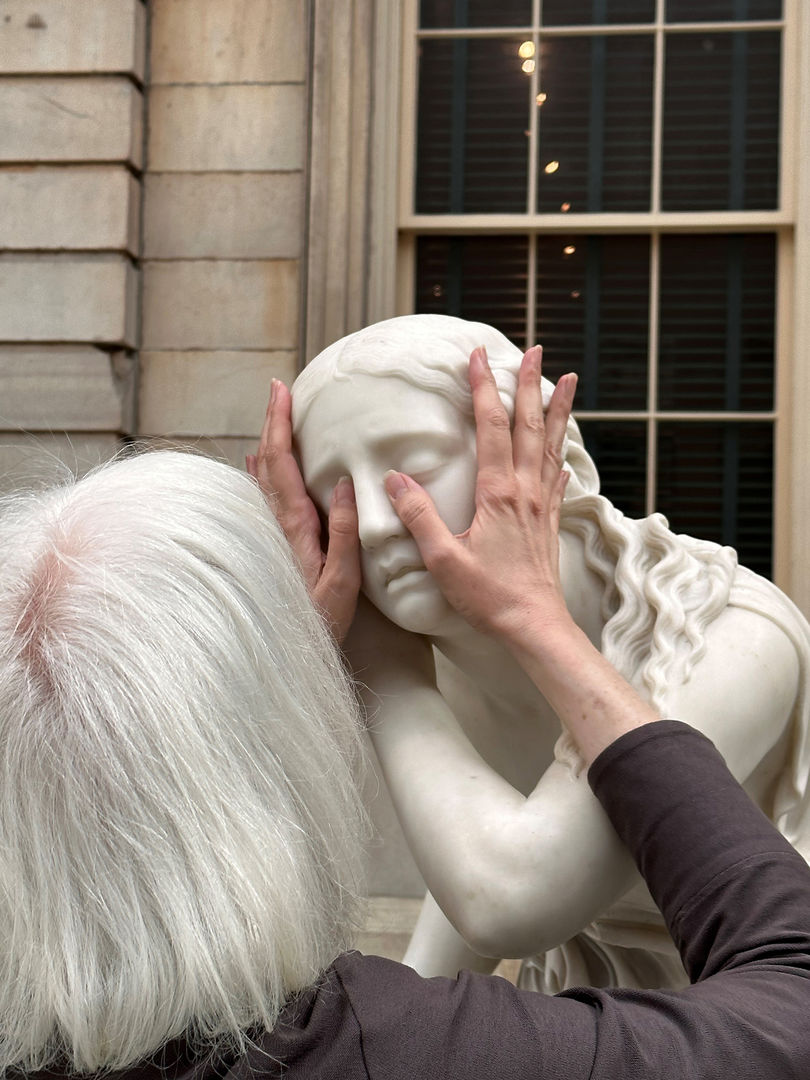
Georgina Kleege touching Nydia, the Blind Flower Girl of Pompeii, 1853–54; carved 1859. Photo by Emily Harr
For one thing, I want to know how the artist made her blindness show. Blindness is not always apparent in the eyes. The novelist Sir Edward Bulwer-Lytton, who created the character Nydia in his popular novel The Last Days of Pompeii (1834), made the point that her eyes were unmarked by blindness, without flaw, indistinguishable from sighted eyes. But here, the artist has to do something to make Nydia’s blindness distinguishable. Like other artists depicting blindness, such as Pablo Picasso, in his Blue Period painting The Blind Man’s Meal (1903), Rogers resorts to tropes that draw viewers’ attention to the eyes and hands. In Picasso’s painting, the man’s elongated fingers reach in a distinctive way to a jug on his right, while his deeply set, staring eyes are aimed the other way but do not seem to focus. Hands go one way, eyes go another. The viewer is meant to put these two factors together and arrive at the conclusion of blindness.
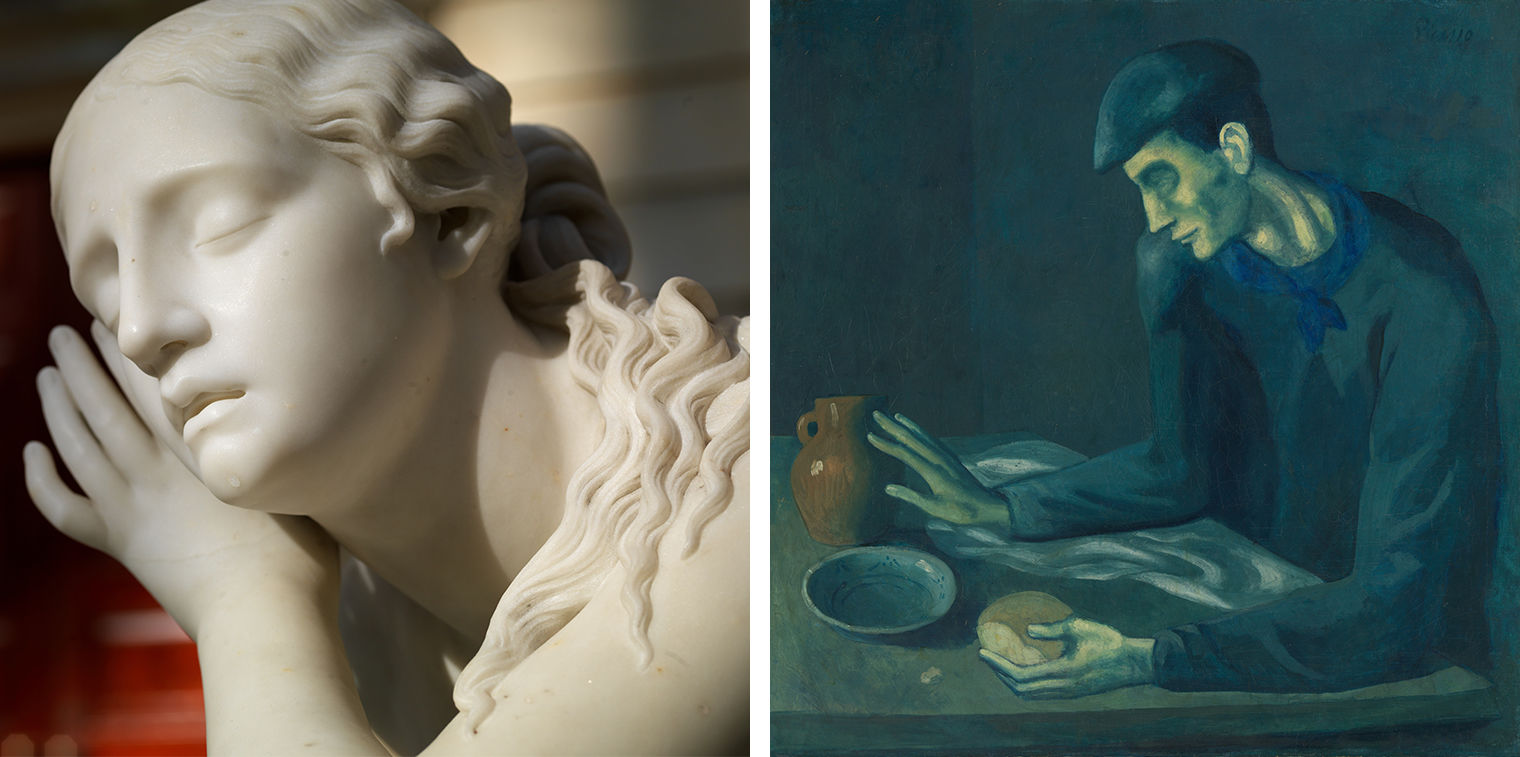
Left: Detail of Nydia, the Blind Flower Girl of Pompeii, 1853–54; carved 1859. Right: Pablo Picasso (Spanish, 1881–1973). The Blind Man's Meal, 1903. Oil on canvas, 37 1/2 x 37 1/4 in. (95.3 x 94.6 cm). The Metropolitan Museum of Art, New York, Purchase, Mr. and Mrs. Ira Haupt Gift, 1950 (50.188) © 2023 Estate of Pablo Picasso / Artists Rights Society (ARS), New York
My first move on meeting Nydia is to go for her eyes. They are closed. Her upper and lower lids meet in a horizontal line slightly below the equator of her eyeball. This feels unusual. When I close my own eyes, the two lids meet at the lower edge of the eye socket. Do her eyes appear to protrude? Not really. I feel for her hands. Her right hand grips a staff, another standard signifier of blindness, though it is entangled in her flowing garment. It is her left hand and arm that really draws the attention here. Her arm crosses her body, and her hand reaches up to cup her left ear, the palm facing backward over her shoulder. This leads me to wonder at first if she is deaf or deaf-blind. The label says it represents her especially acute hearing, reiterating one of many myths about blindness: that the loss of one sense results in the augmentation of others. In the novel, it is not that she hears more or better than other people, just that she pays closer attention to sounds.
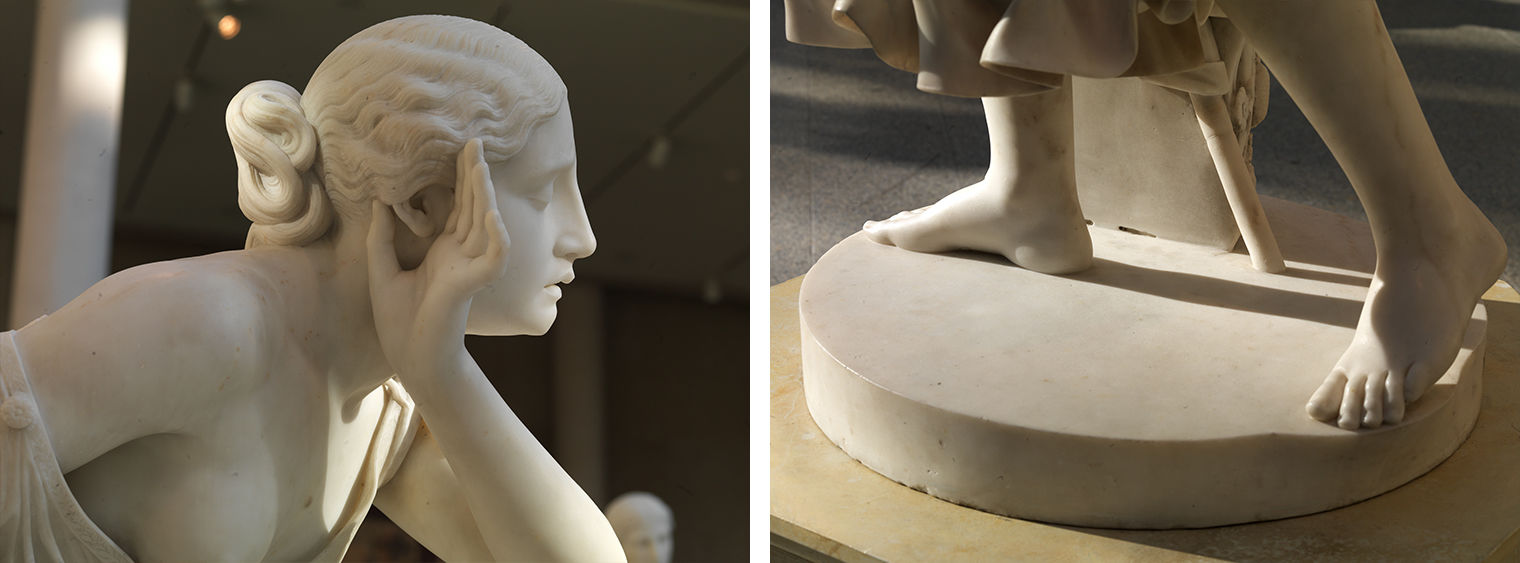
Details of Nydia, the Blind Flower Girl of Pompeii, 1853–54; carved 1859
In any case, the pose is arresting. Why not cup her left ear with her left hand? The viewer must stop and stare, ask what she’s doing. Or more immediately, where is she going? Because she is definitely on the move. Her back is inclined forward at a steep angle. Her right leg strides forward, while her left pushes off, her left pinky toe already peeled off the ground with the others extending on the way to follow. There is a line of energy that spirals up from her left heel, past her elbow and forearm and around back over her right shoulder. At the same time, the drapery seems to be swirling in the opposite direction, encircling her staff and whirling around to her left, clinging to her torso and billowing out in thick folds. There must be a lot of wind, both from the rush of her movement and from the volcanic eruption playing out around her—smoke, flames, molten lava flowing, boiling water spewing, Pompeiians fleeing.
What moment of the story did the artist want to capture here? Nydia strides forward and listens backward. In the novel, she leads Glaucous and Ione, the stars of the story, to safety. She knows her way around, has been navigating the whole city of Pompeii all her life. She is undaunted by low visibility. And she is in love with Glaucous, has loved him even before he rescued her from her cruel enslavers. She loves him enough that she is even saving the woman he loves, who would be Nydia’s rival, if she weren’t enslaved, or a servant, or whatever she is in this strictly ordered world.
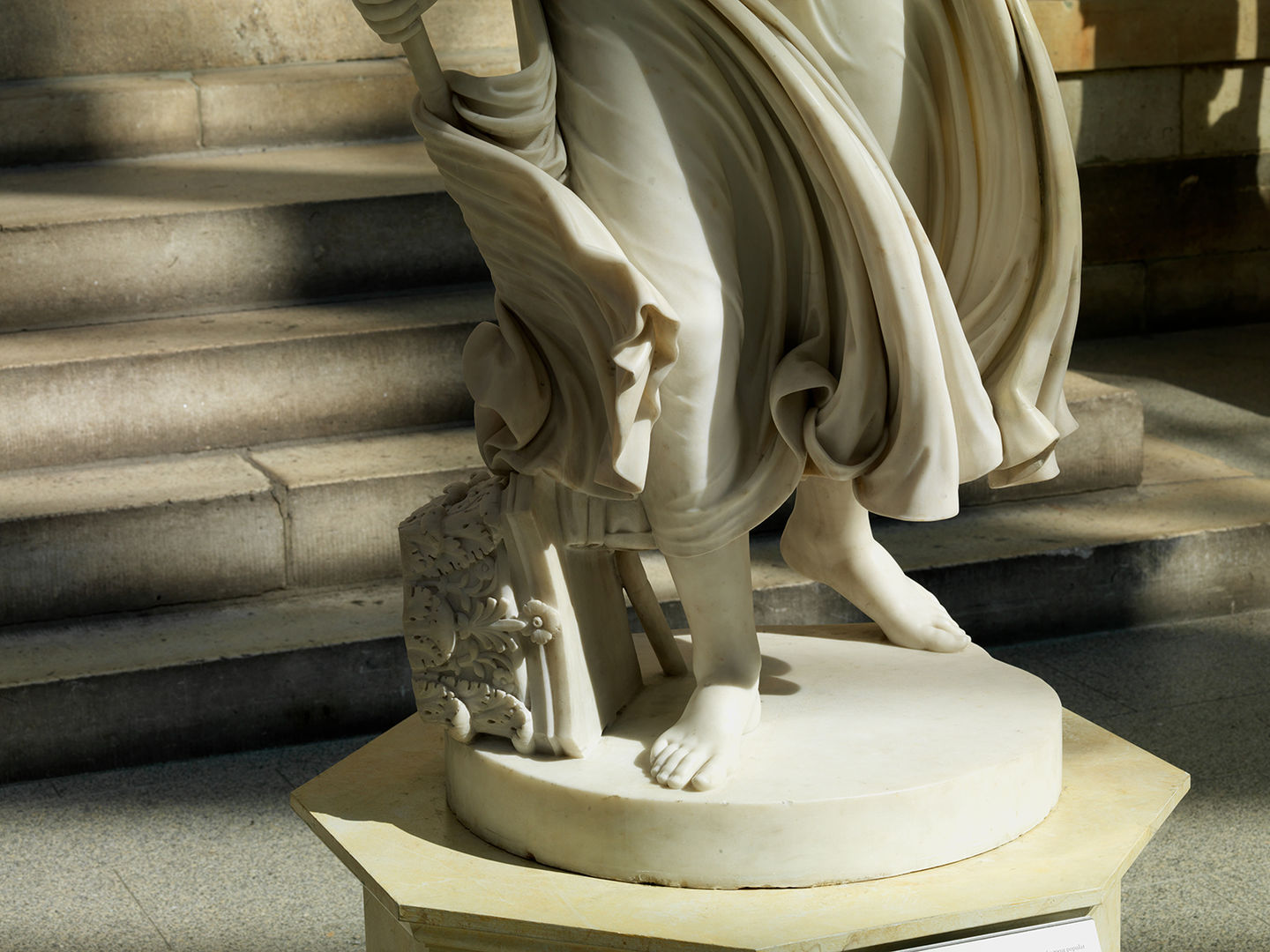
Detail of Nydia, the Blind Flower Girl of Pompeii, 1853–54; carved 1859
Nydia only thinks of saving Glaucous. She strides forward; he follows, half carrying his beloved. They are separated by the fleeing crowds. Nydia is almost to the harbor where she could save herself, but she goes back, fighting the panicked throngs, finding the place where they became separated, and then eventually the portico of a temple on the verge of collapse where the couple cowers. She strides forward and listens backward. Her staff extends behind her, wrapped in all that drapery, but it has done its job, having detected the fallen capitol beside her right foot. I note that there is an awful lot of drapery. If she were standing still, this dress would swamp her.
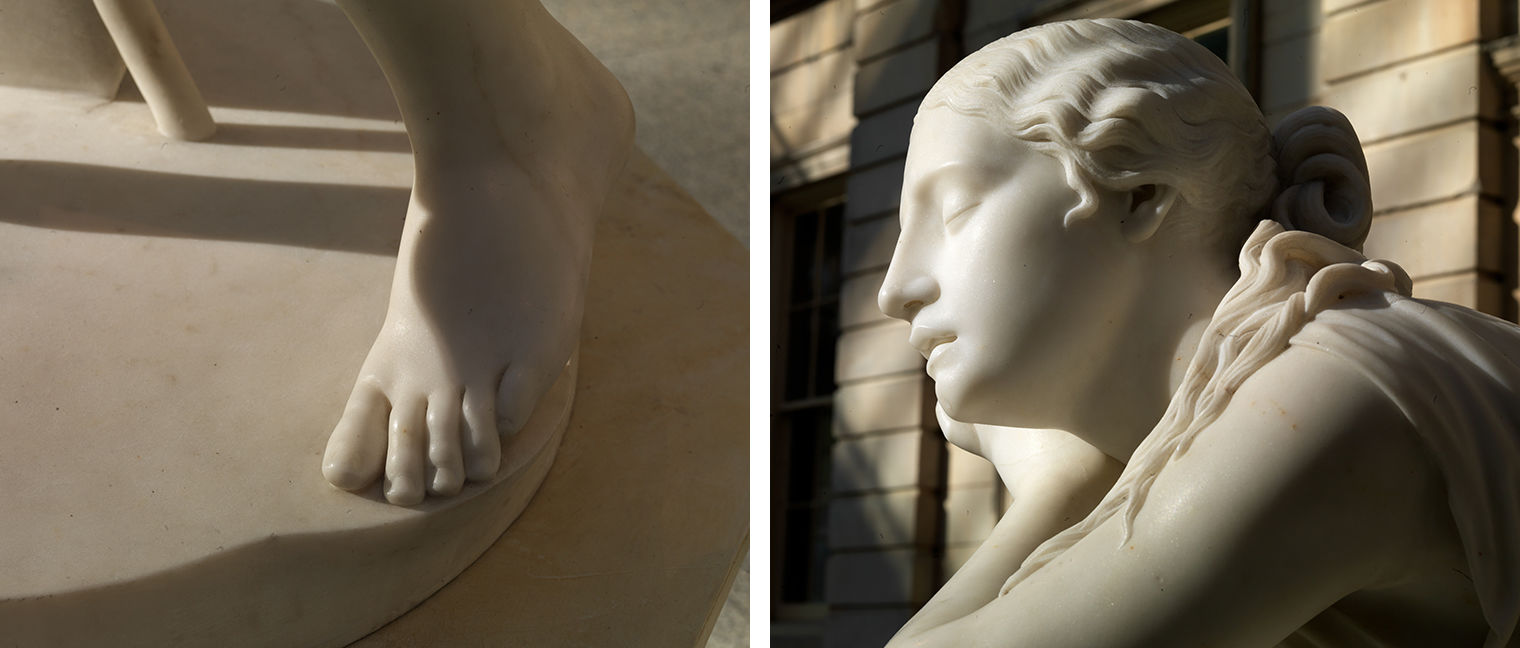
Details of Nydia, the Blind Flower Girl of Pompeii, 1853–54; carved 1859
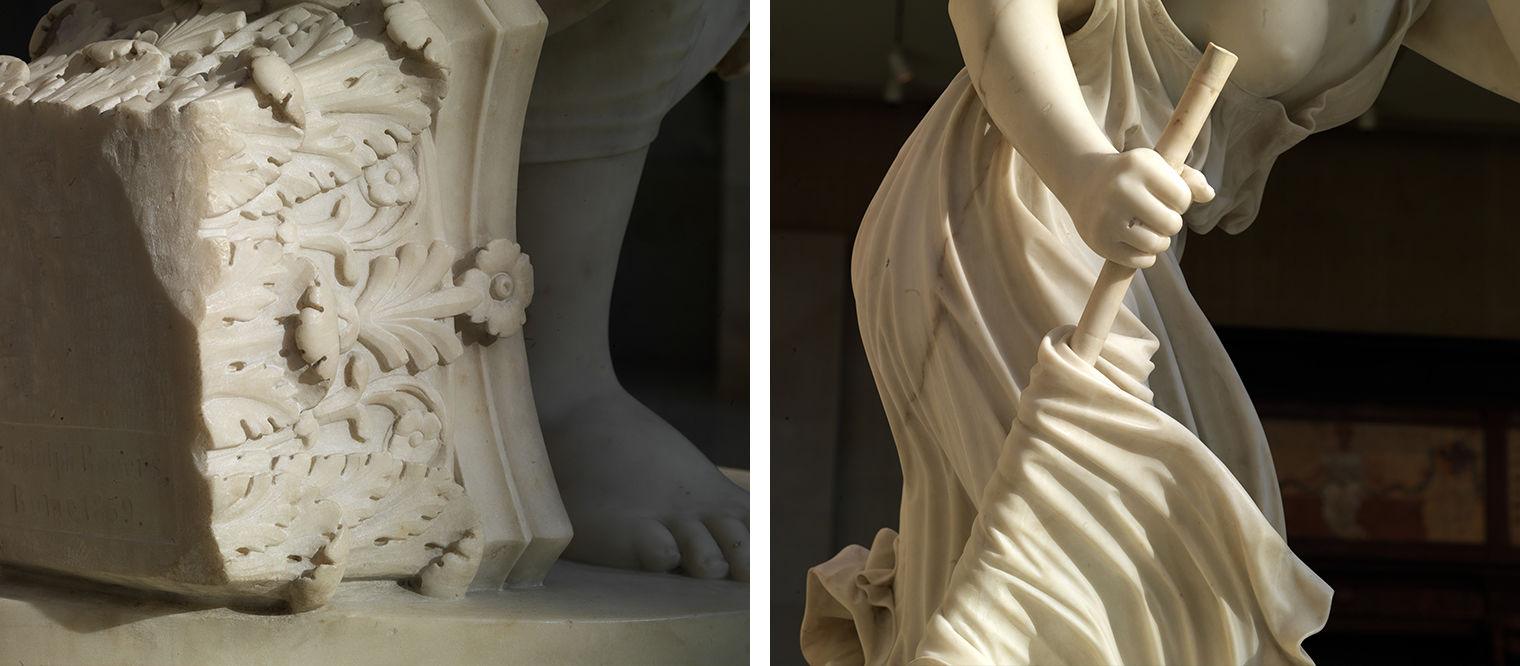
Details of Nydia, the Blind Flower Girl of Pompeii, 1853–54; carved 1859
There’s a lot of detail here for the blind beholder’s fingers, a lot of virtuosic carving. Regularly spaced horizontal lines all down her staff suggest bamboo. The carving of the fallen Corinthian capitol is crisp and precise. There is a delicate pattern edging the neckline of her robe, perhaps an embroidered ribbon, and the strands of hair that have escaped her large bun curl and twist around her neck. In one of the billowing folds of her robe, I detect traces of some damage to the marble, a line of a rougher texture, possibly a plaster repair.
It feels wrong, however, to dwell on these details. I find I cannot follow my usual orderly sequence for touching a sculpture. I rush because she is rushing. I want to move with and around her. When I try to assume her pose, I fall forward. I want to grab hold of her, dig in my heels and stop her, because I know how this story ends. Yes, she will save Glaucous and Ione. She will get the three of them on a ship bound for Athens. But then, as everyone collapses in exhausted sleep, she will realize that there is no future for her. Glaucous and Ione will marry and convert to Christianity, which the novel proclaims as the ultimate happy ending. But what can Nydia hope to be in their household? She can’t go forward, but she can’t stay in her ruined city. No place for a blind flower girl in a city of ash. While sailors and refugees sleep, Nydia slips silently into the sea and drowns.
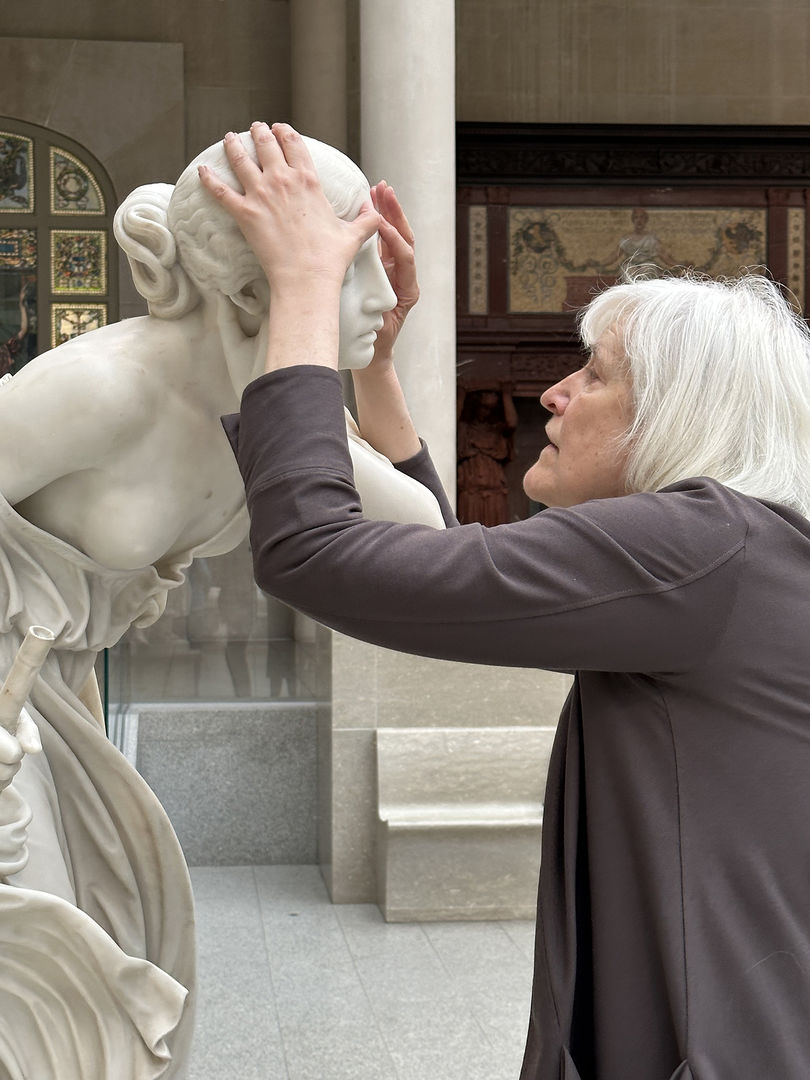
Georgina Kleege touching Nydia, the Blind Flower Girl of Pompeii, 1853–54; carved 1859. Photo by Emily Harr
Marquee: Randolph Rogers (American, 1825–92). Nydia, the Blind Flower Girl of Pompeii, 1853–54; carved 1859. Marble, 54 x 25 1/4 x 37 in. (137.2 x 64.1 x 94 cm). The Metropolitan Museum of Art, New York, Gift of James, Douglas, 1899 (99.7.2)




















